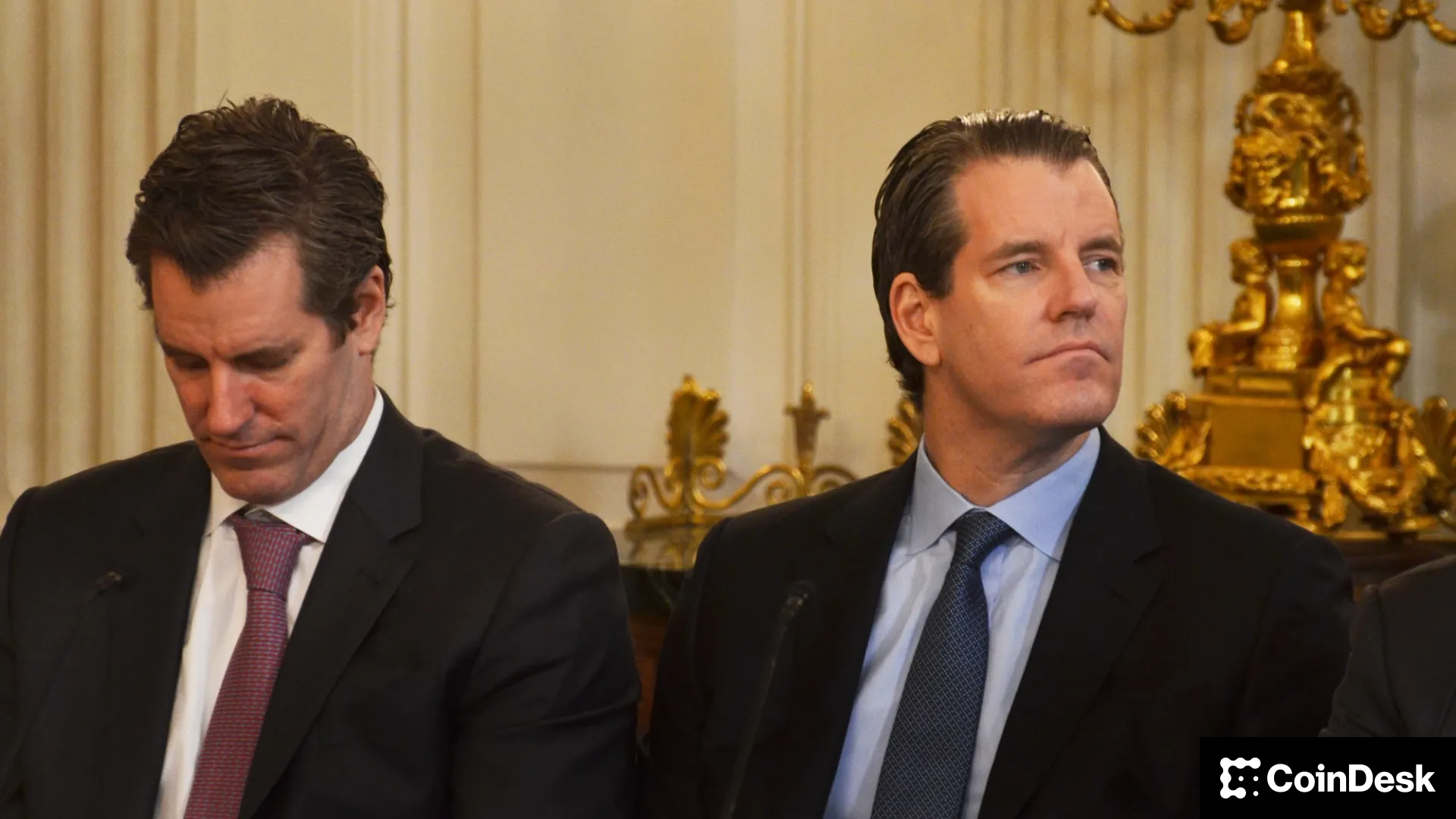Uncategorized
Shuttered Russian Crypto Exchange Garantex Rebrands as Grinex, Global Ledger Finds

Less than two weeks after it was taken down by international law enforcement authorities, Garantex — a Russian crypto exchange popular with ransomware gangs and sanctions-evading oligarchs — has allegedly already risen from the ashes, rebranding itself as Grinex.
According to a new report from Swiss blockchain analytics firm Global Ledger, a slew of on and off-chain data indicates that Grinex is a direct successor to Garantex. Some liquidity from Garantex, including all of Garantex’s holdings of a ruble-backed stablecoin called A7A5, has already been moved to Grinex-controlled wallets.

Global Ledger CEO Lex Fisun told CoinDesk that, in addition to on-chain data connecting Garantex to Grinex, there have been numerous off-chain indications that the two exchanges are intimately connected. Fisun pointed to the rapid growth of Grinex, which he said had surpassed $40 million in volume in just two weeks, as well as a host of social media ties between the two exchanges.
Though other major blockchain analytics companies, including TRM Labs and Chainalysis, have yet to confirm Global Ledger’s findings, Chainalysis’ Head of National Security Intelligence Andrew Fierman told CoinDesk that he had seen several indicators that Grinex was likely to be the rebrand of Garantex.
Fierman pointed to a recent Telegram comment from Sergey Mendeleev, one of the original founders of Garantex, announcing the creation of Grinex and claiming any similarities between the two exchanges were random — followed by two crying laughing emojis. Both Fierman and Fisun told CoinDesk that there were numerous reports of Garantex users going to Garantex’s in-person offices in Europe and the Middle East and transferring their crypto from Garantex to Grinex. Both also pointed out the similarities in the two platforms’ user interfaces.

Though the evidence is certainly compelling, Fierman said that until Chainalysis completes its review of Grinex’s infrastructure, it cannot definitively validate the accuracy of Global Ledger’s report.
But, if Grinex is, in fact, a rebrand of Garantex, it wouldn’t be the first time that a sanctioned exchange remade itself after a shutdown. In 2017, Russian crypto exchange BTC-E was taken down by American law enforcement, and subsequently rebranded as WEX. WEX didn’t last long though — it shuttered a year later due to internal conflict and in-fighting among its remaining leadership. Similarly, sanctioned Russian exchange Suex rebranded as Chatex, and was subsequently sanctioned again.
The trouble with sanctions
The fast revival of Garantex demonstrates the challenge of sanctions, especially against criminal operations like non-compliant exchanges, darknet marketplaces and ransomware gangs that can simply morph to avoid detection.
“Sanctions evasion is going to happen,” Fierson said. “Because if you’re sanctioned, you aren’t just going to accept that you can no longer conduct any financial transactions. You are going to look to avoid detection, however that may be, whether it be through creating shell companies, creating new crypto wallets — and the larger the operation, and the more prominent, the more technically advanced you’d have to be to actually make it work.”
Feirson said this problem isn’t unique to crypto, but crypto-related sanctions offer law enforcement a unique opportunity to follow the money after sanctions are put in place.
“The unique aspect to the blockchain is that it’s transparent and immutable, and so what happens when a company gets shut down is a lot more examined,” Fierson said. “There’s a lot more to examine on-chain. Garantex gets shut down, their Tether holdings get seized, but that doesn’t stop them from moving other assets. There’s opportunity to monitor what happens to those funds post-official shutdown.”
A hydra-like network of potential successors
Whether Grinex is Garantex 2.0 or not, there are a number of other non-compliant Russian crypto exchanges eager and willing to take its place.
Ari Redbord, global head of policy and government affairs at TRM Labs, told CoinDesk that it was simply “too early” to definitively assess the relationship between Grinex and Garantex. “That said, it is clear that other high-risk non-compliant exchanges will try to fill the illicit finance void left by Garantex,” he added.
A recent client report from TRM Labs named several possible successors, including high-risk Russian exchanges ABCEX and Keine-Exchange.
Garantex take down
Garantex was dismantled by international law enforcement from the U.S., Germany and Finland in a joint operation earlier this month, which seized its domain and servers.
The U.S. Treasury’s Department of Foreign Asset Control (OFAC) first sanctioned the exchange in 2022, accusing it of knowingly facilitating money laundering for ransomware gangs like Black Basta and Conti, as well as darknet markets like Hydra.
According to court documents, Garantex’s clientele also included North Korea’s state-sanctioned hacking squad The Lazarus Group, which was behind the recent $1.4 billion Bybit hack, as well as Russian oligarchs who used the service to evade sanctions after Russia’s invasion of Ukraine.
Two of Garantex’s operators, Lithuanian national and Russian resident Aleksej Besciokov and Russian citizen and United Arab Emirates resident Aleksandr Mira Serda have been charged with money laundering conspiracy in connection with their work with Garantex. Besciokov was arrested while vacationing with his family in India earlier this month, and is expected to be extradited to the U.S. to face charges.
Business
Crypto Trading Firm Keyrock Buys Luxembourg’s Turing Capital in Asset Management Push

Crypto trading firm Keyrock said it’s expanding into asset and wealth management by acquiring Turing Capital, a Luxembourg-registered alternative investment fund manager.
The deal, announced on Tuesday, marks the launch of Keyrock’s Asset and Wealth Management division, a new business unit dedicated to institutional clients and private investors.
Keyrock, founded in Brussels, Belgium and best known for its work in market making, options and OTC trading, said it will fold Turing Capital’s investment strategies and Luxembourg fund management structure into its wider platform. The division will be led by Turing Capital co-founder Jorge Schnura, who joins Keyrock’s executive committee as president of the unit.
The company said the expansion will allow it to provide services across the full lifecycle of digital assets, from liquidity provision to long-term investment strategies. «In the near future, all assets will live onchain,» Schnura said, noting that the merger positions the group to capture opportunities as traditional financial products migrate to blockchain rails.
Keyrock has also applied for regulatory approval under the EU’s crypto framework MiCA through a filing with Liechtenstein’s financial regulator. If approved, the firm plans to offer portfolio management and advisory services, aiming to compete directly with traditional asset managers as well as crypto-native players.
«Today’s launch sets the stage for our longer-term ambition: bringing asset management on-chain in a way that truly meets institutional standards,» Keyrock CSO Juan David Mendieta said in a statement.
Read more: Stablecoin Payments Projected to Top $1T Annually by 2030, Market Maker Keyrock Says
Business
Crypto Trading Firm Keyrock Buys Luxembourg’s Turing Capital in Asset Management Push

Crypto trading firm Keyrock said it’s expanding into asset and wealth management by acquiring Turing Capital, a Luxembourg-registered alternative investment fund manager.
The deal, announced on Tuesday, marks the launch of Keyrock’s Asset and Wealth Management division, a new business unit dedicated to institutional clients and private investors.
Keyrock, founded in Brussels, Belgium and best known for its work in market making, options and OTC trading, said it will fold Turing Capital’s investment strategies and Luxembourg fund management structure into its wider platform. The division will be led by Turing Capital co-founder Jorge Schnura, who joins Keyrock’s executive committee as president of the unit.
The company said the expansion will allow it to provide services across the full lifecycle of digital assets, from liquidity provision to long-term investment strategies. «In the near future, all assets will live onchain,» Schnura said, noting that the merger positions the group to capture opportunities as traditional financial products migrate to blockchain rails.
Keyrock has also applied for regulatory approval under the EU’s crypto framework MiCA through a filing with Liechtenstein’s financial regulator. If approved, the firm plans to offer portfolio management and advisory services, aiming to compete directly with traditional asset managers as well as crypto-native players.
«Today’s launch sets the stage for our longer-term ambition: bringing asset management on-chain in a way that truly meets institutional standards,» Keyrock CSO Juan David Mendieta said in a statement.
Read more: Stablecoin Payments Projected to Top $1T Annually by 2030, Market Maker Keyrock Says
Business
Gemini Shares Slide 6%, Extending Post-IPO Slump to 24%

Gemini Space Station (GEMI), the crypto exchange founded by Cameron and Tyler Winklevoss, has seen its shares tumble by more than 20% since listing on the Nasdaq last Friday.
The stock is down around 6% on Tuesday, trading at $30.42, and has dropped nearly 24% over the past week. The sharp decline follows an initial surge after the company raised $425 million in its IPO, pricing shares at $28 and valuing the firm at $3.3 billion before trading began.
On its first day, GEMI spiked to $45.89 before closing at $32 — a 14% premium to its offer price. But since hitting that high, shares have plunged more than 34%, erasing most of the early enthusiasm from public market investors.
The broader crypto equity market has remained more stable. Coinbase (COIN), the largest U.S. crypto exchange, is flat over the past week. Robinhood (HOOD), which derives part of its revenue from crypto, is down 3%. Token issuer Circle (CRCL), on the other hand, is up 13% over the same period.
Part of the pressure on Gemini’s stock may stem from its financials. The company posted a $283 million net loss in the first half of 2025, following a $159 million loss in all of 2024. Despite raising fresh capital, the numbers suggest the business is still far from turning a profit.
Compass Point analyst Ed Engel noted that GEMI is currently trading at 26 times its annualized first-half revenue. That multiple — often used to gauge whether a stock is expensive — means investors are paying 26 dollars for every dollar the company is expected to generate in sales this year. For a loss-making company in a volatile sector, that’s a steep price, and could be fueling investor skepticism.
-

 Business11 месяцев ago
Business11 месяцев ago3 Ways to make your business presentation more relatable
-

 Fashion11 месяцев ago
Fashion11 месяцев agoAccording to Dior Couture, this taboo fashion accessory is back
-

 Entertainment11 месяцев ago
Entertainment11 месяцев ago10 Artists who retired from music and made a comeback
-

 Entertainment11 месяцев ago
Entertainment11 месяцев ago\’Better Call Saul\’ has been renewed for a fourth season
-

 Entertainment11 месяцев ago
Entertainment11 месяцев agoNew Season 8 Walking Dead trailer flashes forward in time
-

 Business11 месяцев ago
Business11 месяцев ago15 Habits that could be hurting your business relationships
-

 Entertainment11 месяцев ago
Entertainment11 месяцев agoMeet Superman\’s grandfather in new trailer for Krypton
-

 Entertainment11 месяцев ago
Entertainment11 месяцев agoDisney\’s live-action Aladdin finally finds its stars




